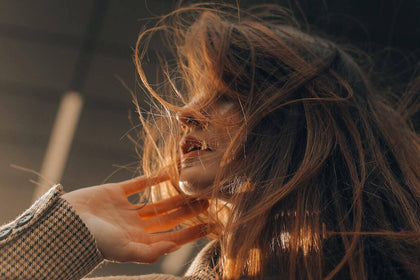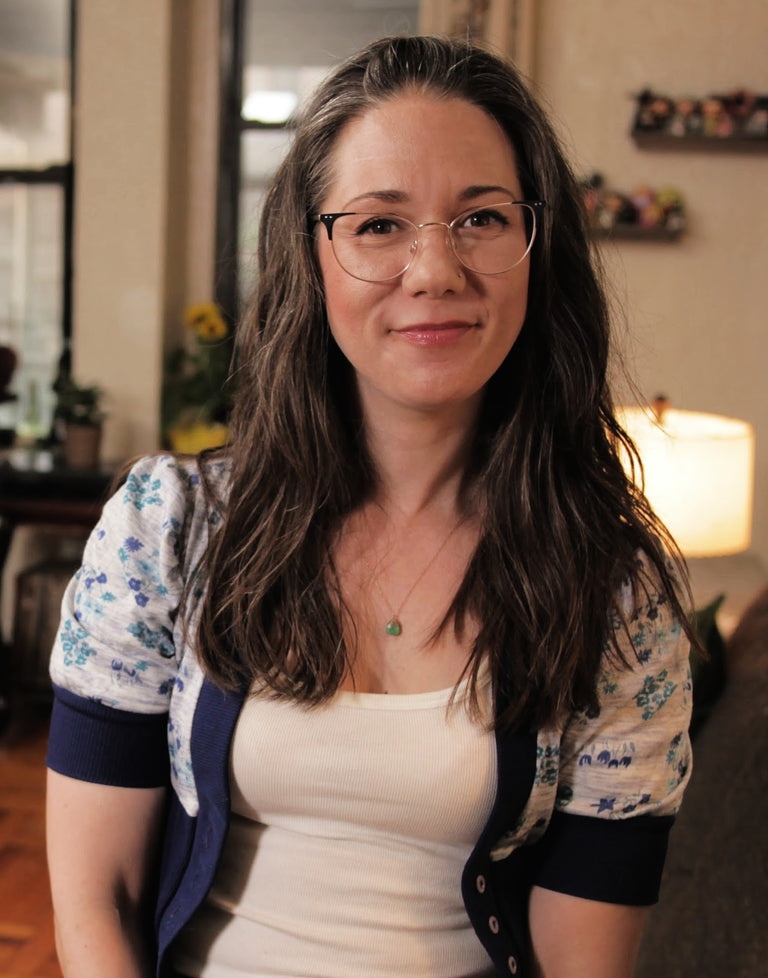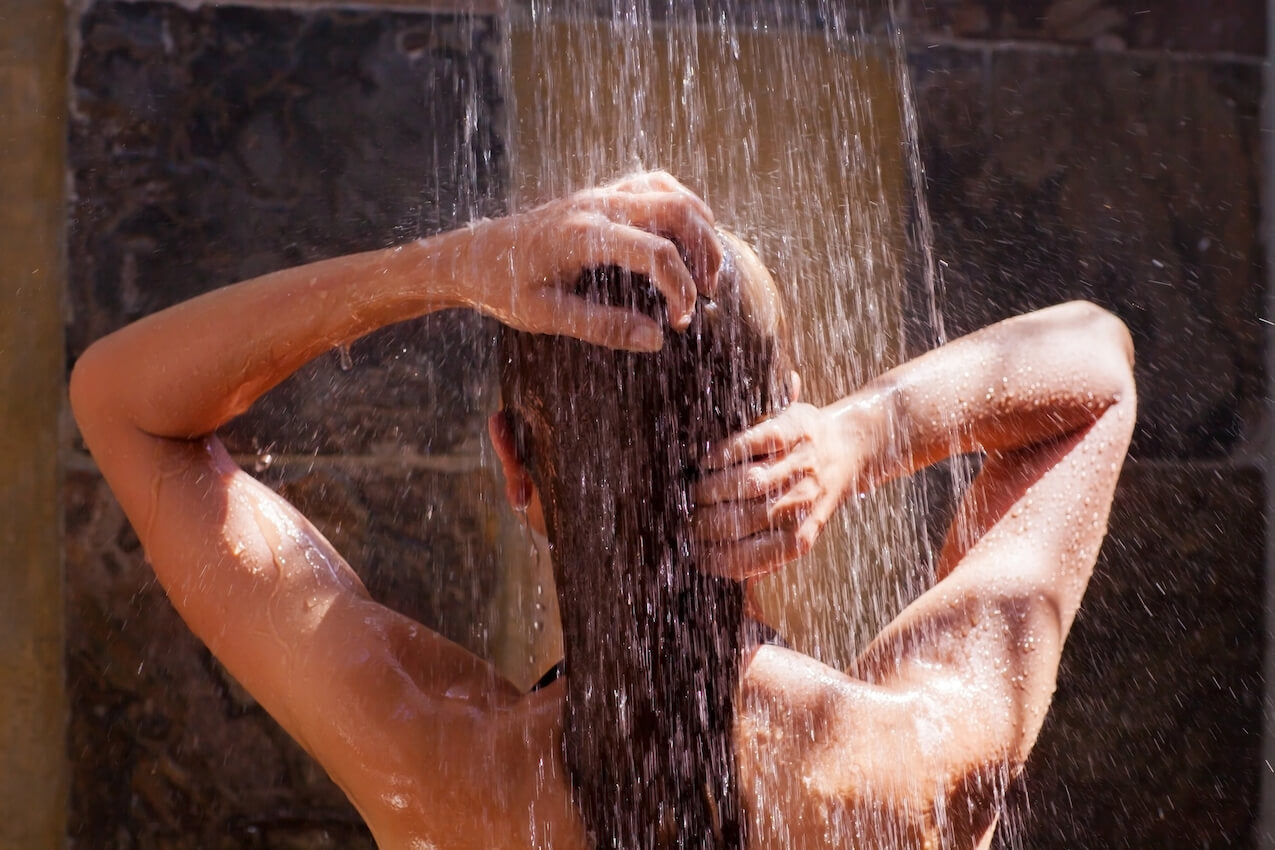While it is true that most of the hair shaft is not living, the processes our bodies go through to produce hair and the hairs themselves are very complex.
To help you optimize your hair health, it helps to understand what hair is made of and how your body produces it. Here's what you need to know, plus discover the products you should be using to get your healthiest hair ever.
#include-related-slider#
How Hair Is Made
While you only see the end result — the mane of hair on your head — your body's process of creating hair takes place behind the scenes. Here's a look behind the biological curtain.
The Anatomy of Hair
Each one of your hairs, or each “hair shaft,” is made in a hair follicle that lives within the dermis (a layer of skin). You can think of a hair follicle as kind of like a womb where all the action happens in creating hair. The hair root — located in the bottom of the hair follicle — is what anchors the hair shaft into the skin. The arrector pili, a small muscle that is attached to the hair root, contracts when you get cold; it's these tiny little muscles that give you goosebumps.
Shop: The VEGAMOUR Hair Collection
A Hair Is Born
Before your hair grows out of the surface of your skin, it begins as a collection of living cells that are made by a bulb housed at the base of the hair follicle. The bulb contains a collection of nerves and blood vessels — aka the dermal papilla — that nourish and deliver hormones to the living hair cells during their development. Sebaceous glands, which are attached to each hair follicle, produce oils that protect the hair shaft as it emerges.
It's important to note that products that are designed to support healthier looking hair, like GRO Hair Serum, will focus on nourishing the hair follicle (either topically or internally) since this is where the living cells that will eventually become part of the hair shaft are formed. It’s in the follicle that changes to your hair’s development can be made.
Hair As We Know It
Eventually, the living cells within the bulb die and are pushed up and out of the follicle to produce a visible strand of hair. Yes, you guessed it, your hair is actually a collection of dead cells. But the process doesn't stop there.
Next, the bulb gets to work, producing new cells that will become fused to the cells that have already been pushed out of the follicle. The process repeats on an endless loop, which results in the strand or shaft of hair becoming longer and longer. Voila! Hair growth ensues.
Shop: GRO+ Advanced Hair Serum
What Is Hair Made Of?
You may already know that human hair is primarily made of a strong protein called keratin, which is also a building block of nails and skin. Since keratin itself is a protein, our diets need to contain a sufficient amount of protein for hair development. Within our bodies, proteins get broken down into amino acids, which in turn become the building blocks for hair. Amino acids like cysteine, lysine, arginine and methionine are particularly important for hair growth and development. Other important building blocks for hair include biotin, niacin, vitamin C, iron and zinc.
Hair Structure
Each shaft of hair is made up of two or three layers: the cuticle, the cortex and sometimes the medulla. Here's the role each one plays in the structure of your hair.
- Cuticle: Protects the inner layers of the hair — kind of like a terra cotta roof of overlapping cells
- Cortex: Created by long coils of protein — where the natural pigments that color your hair are stored
- Medulla: Only present in the thicker hair shafts on your head — has a fragile structure akin to bone marrow.
Shop: Madison Rae's Top VEGAMOUR Picks
Why Hair Has Different Textures and Colors
Texture is the easy part. The texture and shape of your hair depend on the shape of the hair follicle. Circular follicles will produce straight hair, while oval follicles will produce curly or wavy hair.
What determines hair color is more complex. Cells in the hair bulb, called melanocytes, produce a pigment called melanin that gives our hair (and our skin) its color. The variety and amount of melanin each person produces are determined by their own unique genes. Two types of melanin exist, eumelanin and pheomelanin.
When follicles make a high concentration of eumelanin, hair color will be black. When there is a moderate amount, hair color will be brown. And when it is produced in small quantities, hair color will be blond.
Pheomelanin is what produces red hues. A person's natural hair color is the result of different ratios of eumelanin and pheomelanin coming together to produce a unique hue. As we get older, our follicles lose the ability to make melanin, which is why hair turns gray or white.
Learn: How Often You Should Really Be Washing Your Hair
The 4 Growth Cycles of Hair
Hair growth happens in four different phases, and any follicle could be in a different stage of growth at any given time. Here's a breakdown.
- Anagen Phase: The active growth stage. Most of your hair (about 90%) will be in this stage at any given time. During this time, a new shaft of hair will begin development and grow from anywhere between two to six years.
- Catagen Phase: The hair shaft stops growing. At any given time, about 1% of your hair follicles will be in this stage. It’s a period of stasis when the follicle will hold on to the shaft until it’s time for it to be shed.
- Telogen Phase: A rest period for the follicle before the hair is shed, and a new hair will be produced. The telogen phase lasts for about three months.
- Exogen Phase: The final stage when hair shafts will make their final exit from your head or skin. While it's hard to believe, it’s totally normal to lose about 100 individual hairs per day during this phase. Thankfully, it only lasts a few days.
Discover: The Science Behind Vegamour
Things You Can Do To Support Hair Healthy Growth
When it comes to supporting the health of your scalp and follicles, there's a lot you can do. What you eat, how much stress you have on your proverbial plate, the external environment, your hormone levels — and even certain conditions and illnesses — will all affect how long follicles stay in different phases of the growth cycle.
The good news is, there are lots of things you can do to actively support your overall hair health:
- Relax and reduce stress: Excess stress can have negative impacts on our bodies in so many ways, including our hair health. Research shows women under stress are more likely to suffer from hair loss.
- Balance your diet: Feed your follicles by giving them the variety of vitamins, nutrients and minerals they need. This means a truly healthy and balanced diet with plenty of healthy fats, fruits, vegetables and protein.
- Supplement with targeted products: Consider biotin gummy vitamins, which are specifically designed to boost hair health. Or choose from a variety of other hair wellness products.
- Be kind to your scalp and your hair: Everyday heat and extensive styling can be tough on your scalp, follicles and hair shafts. Try to incorporate lower-impact days into your styling rotation.
The takeaway? Hair is wonderfully complex, and it needs to be supported inside and out. Combine a healthy, balanced lifestyle along with a targeted hair care and wellness routine to benefit your mane from its roots to its ends.
#include-related-slider#
More From VEGAMOUR
- Learn: Why MIllions of Women Trust GRO Hair Serum
- Read This GRO Hair Serum Review
- How to Detangle Your Hair With Minimal Damage
- A Beauty Editor's Inside-Out Hair Routine
Photo credit: Maksim Goncharenok/Pexles
Back



















